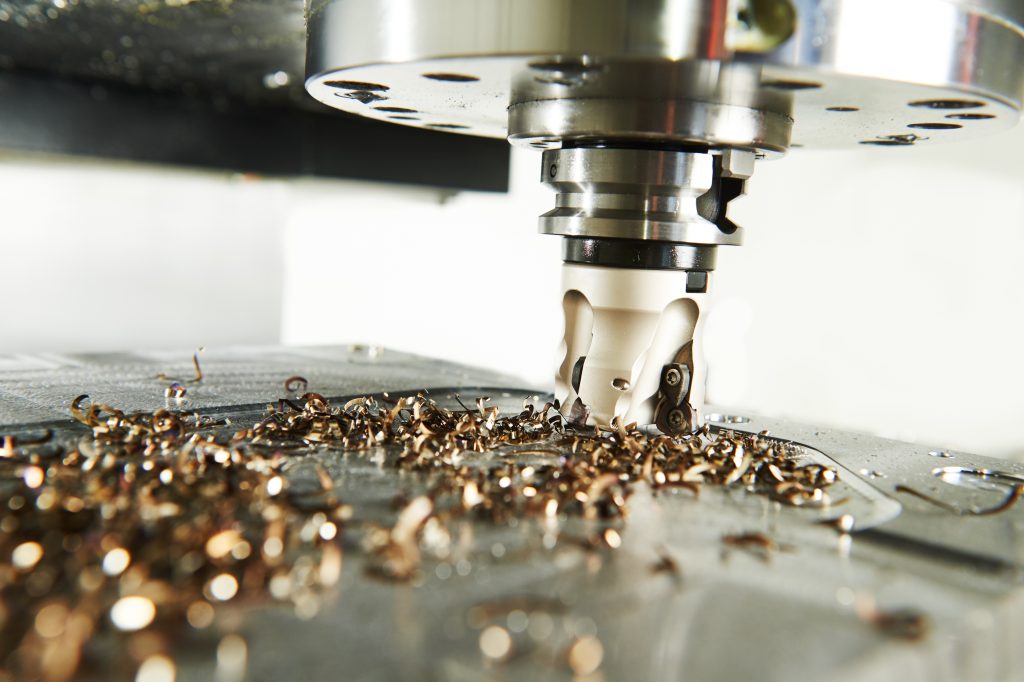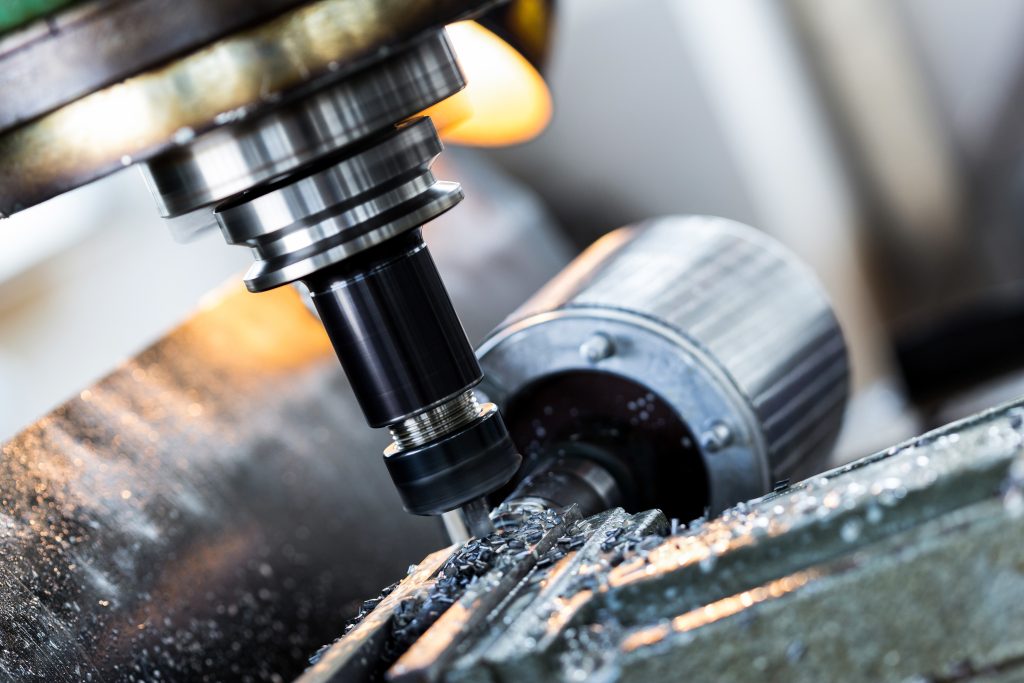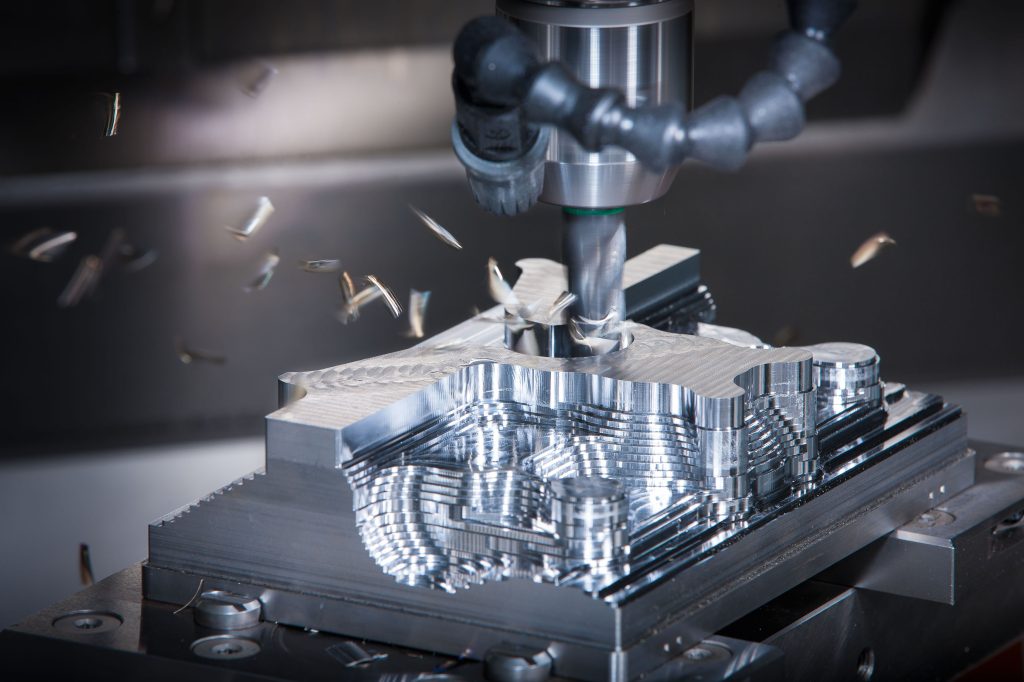Table of Contents
- Introduction to CNC Milling
- CNC Milling Machines and Their Types
- CNC Milling Process and Techniques
- Advantages and Disadvantages of CNC Milling
- Applications of CNC Milling in Different Industries
- Factors to Consider for Choosing a CNC Milling Machine
- Maintenance and Safety of CNC Milling Machines
- Future of CNC Milling Technology
- Conclusion: Why CNC Milling is the Future of Manufacturing
-
1.Introduction to CNC Milling
CNC milling is a form of computer numerical controlled machining that uses rotating cutting tools to shape and cut materials into precise shapes and sizes. It is a highly accurate and efficient manufacturing process that has revolutionized the production industry. CNC milling machines are used to create everything from small parts to large structures, and they are capable of producing highly complex designs with a high degree of accuracy. In this article, we will provide a comprehensive guide to CNC milling, including its history, types of machines, the milling process and techniques, advantages and disadvantages, applications in different industries, factors to consider for choosing a machine, maintenance and safety tips, and the future of CNC milling technology.
-
2.CNC Milling Machines and Their Types
CNC milling machines are computer-controlled machines used for precision machining operations. They use rotary cutting tools to remove material from a workpiece to create a desired shape. There are several types of CNC milling machines available, each with its own unique features and capabilities. Here are some of the most common types of CNC milling machines:
1.Vertical milling machines: These machines have a vertical spindle orientation, with the cutting tool mounted on a spindle that extends vertically from the machine bed. The workpiece is typically positioned vertically on the machine bed and can be moved along the X, Y, and Z axes.
2.Horizontal milling machines: These machines have a horizontal spindle orientation, with the cutting tool mounted on a spindle that extends horizontally from the machine bed. The workpiece is typically positioned horizontally on the machine bed and can be moved along the X, Y, and Z axes.
3.5-axis milling machines: These machines are capable of moving the cutting tool in five different axes, allowing for highly complex and precise machining operations. They are typically used in industries such as aerospace, automotive, and medical manufacturing.
4.High-speed milling machines: These machines are designed for high-speed machining operations and are capable of cutting at speeds up to 40,000 RPM. They are often used in the production of small parts with intricate features.
5.Gantry milling machines: These machines have a gantry structure that allows for large workpieces to be machined with high precision. They are typically used in industries such as aerospace and automotive manufacturing.
6.Bed-type milling machines: These machines have a fixed bed and a movable table that allows for the workpiece to be moved along the X, Y, and Z axes. They are commonly used in the production of large parts with complex shapes.
Each type of CNC milling machine has its own advantages and disadvantages, and the choice of machine depends on the specific needs of the manufacturing process.
-
3.CNC Milling Process and Techniques
The CNC milling process involves several steps, from designing the part to machining it using a CNC milling machine. Here are some of the steps involved in the process:
1.Design: The first step in the CNC milling process is to design the part using CAD (Computer-Aided Design) software. The design is then translated into a CNC program that the machine can understand.
2.Setup: Once the CNC program is created, the milling machine is set up with the proper tools and workholding devices. The workpiece is then positioned on the machine bed.
3.Machining: The machine is started, and the cutting tool is moved along the X, Y, and Z axes to remove material from the workpiece. The machine operator monitors the process to ensure that the cutting tool is removing material at the correct depth and speed.
4.Finishing: After the machining process is complete, the part may require finishing operations such as polishing, deburring, or coating.
There are several techniques used in CNC milling to achieve precise and accurate machining results:
1.Contour milling: This technique is used to machine the perimeter of a part, creating a precise outline.
2.Pocket milling: This technique is used to create pockets or cavities in a part, typically using an end mill tool.
3.Drilling: This technique is used to create holes in a part, typically using a drill bit.
4.Thread milling: This technique is used to create threads in a part, typically using a specialized thread milling cutter.
5.Face milling: This technique is used to create a flat surface on the top or bottom of a part, typically using a face mill cutter.
6.High-speed machining: This technique is used to remove material at high speeds, typically using specialized high-speed milling tools.
CNC milling machines are capable of performing a wide range of machining operations, and the specific techniques used depend on the design and requirements of the part being machined.
-
4.Advantages and Disadvantages of CNC Milling
CNC milling offers several advantages over traditional machining methods, but there are also some disadvantages to consider. Here are some of the key advantages and disadvantages of CNC milling:
Advantages:
1.Precision and accuracy: CNC milling machines are capable of machining parts to incredibly high levels of precision and accuracy, resulting in parts that meet tight tolerances and specifications.
2.Consistency and repeatability: Once a CNC program has been created, the machine can produce identical parts repeatedly and consistently, ensuring high-quality production.
3.Automation and efficiency: CNC milling machines can operate for long periods of time without manual intervention, increasing productivity and efficiency.
4.Flexibility: CNC milling machines are capable of machining a wide range of materials, from metals to plastics, and can produce complex parts with intricate geometries.
5.Reduced labor costs: CNC milling machines require minimal human intervention, reducing the need for manual labor and lowering production costs.
Disadvantages:
1.High initial costs: CNC milling machines can be expensive to purchase and install, making them less accessible to small businesses or hobbyists.
2.Technical expertise required: Operating a CNC milling machine requires specialized knowledge and training, which can be a barrier for some businesses.
3.Maintenance and repair costs: CNC milling machines require regular maintenance and repair, which can be costly and time-consuming.
4.Limited creativity: CNC milling machines are programmed to follow specific designs and patterns, which can limit creativity and innovation.
5.Dependence on technology: CNC milling machines rely on computer software and electronics, which can be vulnerable to malfunctions or cyberattacks.
Overall, CNC milling offers several advantages over traditional machining methods, but it is important to consider the potential drawbacks and weigh them against the specific needs and goals of your business.

-
5.Applications of CNC Milling in Different Industries
CNC milling machines are used in a wide range of industries, from aerospace and automotive to medical device manufacturing and electronics. Here are some examples of how CNC milling is used in different industries:
1.Aerospace industry: CNC milling is used to produce complex components for aircraft engines, wings, and fuselages. These components require high precision and accuracy to meet safety regulations and performance standards.
2.Automotive industry: CNC milling is used to produce components for engines, transmissions, and other critical systems. These components require high accuracy and consistency to ensure proper functioning of the vehicle.
3.Medical device manufacturing: CNC milling is used to produce components for medical devices such as prosthetics, implants, and surgical instruments. These components require high precision and accuracy to ensure proper fit and function within the human body.
4.Electronics industry: CNC milling is used to produce components for electronic devices such as circuit boards and computer chips. These components require high accuracy and consistency to ensure proper functioning of the device.
5.Mold and die making: CNC milling is used to produce molds and dies for manufacturing plastic and metal parts. These molds and dies require high precision and accuracy to ensure that the parts produced are of the correct size and shape.
6.Tool and die making: CNC milling is used to produce cutting tools and dies for manufacturing processes. These tools and dies require high precision and accuracy to ensure that they can perform their intended function efficiently and effectively.
7.Architecture and construction: CNC milling is used to produce components for buildings and structures such as staircases, railings, and decorative elements. These components require high precision and accuracy to ensure proper fit and aesthetic appeal.
Overall, CNC milling is a versatile technology that can be applied to a wide range of industries and applications. Its ability to produce high-precision components with consistency and repeatability has made it an essential tool for modern manufacturing processes.
-
6.Factors to Consider for Choosing a CNC Milling Machine
Choosing the right CNC milling machine for your business can be a daunting task, as there are many factors to consider. Here are some of the key factors to consider when selecting a CNC milling machine:
1.Size and capacity: The size and capacity of the machine will depend on the size of the parts you need to produce. Larger parts require a larger machine, while smaller parts can be produced on a smaller machine.
2.Accuracy and precision: The level of accuracy and precision required for your parts will also influence your choice of machine. Machines with higher accuracy and precision capabilities may be more expensive, but may be necessary for certain applications.
3.Speed and efficiency: The speed and efficiency of the machine will impact your productivity and production costs. Look for machines with fast spindle speeds and rapid traverse rates to increase efficiency.
4.Material compatibility: Consider the types of materials you will be machining, as some machines may not be compatible with certain materials or may require additional tooling.
5.Ease of use: The ease of use of the machine is also an important factor to consider, especially if you are new to CNC milling. Look for machines with user-friendly interfaces and software.
6.Maintenance and support: Consider the maintenance and support requirements of the machine, as well as the availability of spare parts and technical support.
7.Cost: CNC milling machines can vary widely in price, so consider your budget and the expected return on investment for the machine.
8.Brand reputation: Research the reputation of the machine brand and manufacturer, as well as customer reviews and feedback, to ensure you are choosing a reliable and high-quality machine.
9.V1 Machining:V1 Machining is China Top CNC Milling Supplier & Manufacturer offers worldwide clients affordable, rapid, high precision custom CNC Milling Services, variety of materials available to meet the needs of different industries.
Overall, it is important to carefully consider your specific needs and goals when selecting a CNC milling machine. By taking these factors into account, you can choose a machine that will meet your production requirements and provide a strong return on investment.
-
7.Maintenance and Safety of CNC Milling Machines
Proper maintenance and safety are crucial for the efficient and safe operation of CNC milling machines. Here are some key tips for maintaining and operating CNC milling machines safely:
1.Regular maintenance: Regular maintenance is important to keep your machine running smoothly and prevent breakdowns. Follow the manufacturer’s recommended maintenance schedule, which typically includes tasks such as cleaning, lubricating, and inspecting the machine.
2.Proper training: Proper training is essential for safe operation of CNC milling machines. Operators should be trained on the machine’s software, safety features, and emergency procedures.
3.Safety equipment: Operators should wear appropriate personal protective equipment, such as safety glasses and hearing protection, while operating the machine.
4.Tooling maintenance: Proper maintenance of cutting tools and other tooling is important for safety and optimal machine performance. Check tools for damage or wear regularly and replace as necessary.
5.Proper tool selection: Choose the appropriate tooling for the material and operation being performed. Using the wrong tooling can result in damage to the machine, parts, or operator.
6.Dust and debris control: Dust and debris generated during machining can be a safety hazard and can also damage the machine. Use proper dust and debris control measures, such as enclosures and dust collection systems, to keep the work area clean and safe.
7.Emergency procedures: Operators should be trained on emergency procedures, such as stopping the machine in case of an emergency, and how to safely shut down the machine.
8.Regular inspections: Regular inspections of the machine, tooling, and work area can help identify potential safety hazards and maintenance issues.
By following these tips for maintenance and safety, operators can help ensure the safe and efficient operation of CNC milling machines. It is important to always prioritize safety and to seek professional help if maintenance or repairs are needed.
-
8.Future of CNC Milling Technology
CNC milling technology has been evolving and advancing rapidly, and the future looks bright for this technology. Here are some of the trends and advancements that are shaping the future of CNC milling technology:
1.Automation: Automation is becoming increasingly prevalent in CNC milling technology, with advancements in robotics, machine learning, and artificial intelligence. This allows for greater efficiency, accuracy, and productivity in machining processes.
2.5-axis and multi-tasking machines: 5-axis and multi-tasking machines are becoming more common, allowing for greater flexibility and versatility in machining processes. These machines can perform multiple operations in a single setup, reducing cycle times and increasing productivity.
3.Additive manufacturing: The integration of additive manufacturing with CNC milling technology is opening up new possibilities in the production of complex parts with unique geometries. This technology allows for the creation of parts with internal structures and complex shapes that would be difficult or impossible to produce using traditional machining methods.
4.Smart machining: Smart machining technology, such as sensors and real-time monitoring systems, is allowing for greater precision, quality control, and optimization in machining processes. This technology can detect and correct errors in real-time, reducing waste and improving production efficiency.
5.Sustainable manufacturing: Sustainable manufacturing practices are becoming increasingly important, and CNC milling technology is no exception. Advancements in material selection, tooling, and machining processes are allowing for more sustainable and eco-friendly manufacturing practices.
6.Digitalization and connectivity: The integration of CNC milling machines with digital technologies and connectivity is allowing for greater automation and data analysis, improving production efficiency and quality control.
Overall, the future of CNC milling technology looks bright, with continued advancements and innovations driving greater efficiency, productivity, and sustainability in manufacturing processes.

-
9.Conclusion: Why CNC Milling is the Future of Manufacturing
CNC milling technology has revolutionized the manufacturing industry, offering unparalleled levels of precision, accuracy, and efficiency in the production of complex parts and components. As technology continues to evolve and advance, the future of manufacturing looks increasingly dependent on CNC milling technology.
The benefits of CNC milling technology are numerous. CNC milling machines can operate continuously, 24 hours a day, with minimal supervision, reducing labor costs and increasing productivity. They can also produce complex parts with high precision and accuracy, reducing the risk of errors and waste.
CNC milling technology is also highly adaptable, with the ability to produce parts from a wide range of materials, including metals, plastics, and composites. This flexibility allows for the production of a wide range of components, from simple to highly complex.
Advancements in automation, 5-axis and multi-tasking machines, additive manufacturing, smart machining, and digitalization are driving the future of CNC milling technology, making it increasingly efficient, sustainable, and versatile.
In conclusion, CNC milling technology is the future of manufacturing, offering unparalleled levels of precision, efficiency, and versatility. As technology continues to evolve, the potential applications of CNC milling machines will only continue to expand, making them an essential tool for manufacturers across a wide range of industries.













